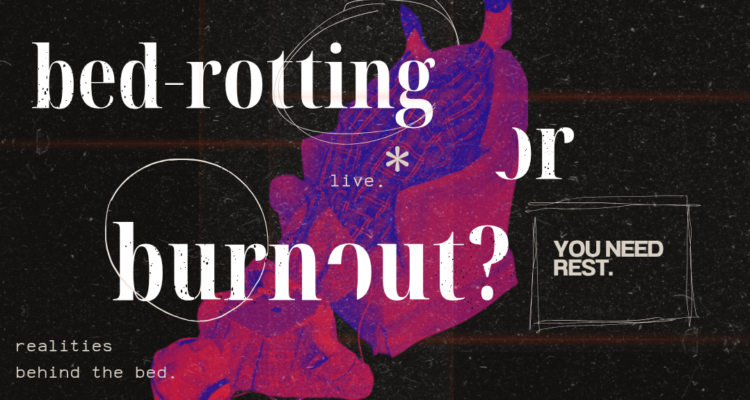When even doing nothing feels exhausting, maybe it’s not you—it’s everything you’re carrying.
The image of someone lying in bed all day used to signal laziness or illness. Now, for many Gen Zs, it’s a form of emotional survival. “Bed-rotting”, the act of spending long hours in bed doing little to nothing, has become a widely shared coping mechanism among young people facing stress and burnout.
It’s not about being unmotivated. It’s about being mentally and emotionally exhausted. With academic pressure, unstable job markets, rising living costs, and the constant digital noise of social media, many young people feel overwhelmed. Bed-rotting is their way of saying, “Hindi ko na kaya.”
The Realities Behind the Bed
Burnout is no longer limited to high-powered professionals. It’s creeping into classrooms, internships, creative work, and even daily life. Gen Z is growing up in a world that pushes productivity over peace, and they’re starting to push back.
Instead of chasing hustle culture, some are choosing to rest, even if it means staying in bed all day. In social media platforms, posts about bed-rotting rack up millions of views, with people openly admitting, “Wala akong energy para sa kahit ano ngayon.”
This behavior is more than just scrolling on your phone for hours. It’s the modern version of shutting down.
“Pagod lang, hindi tamad.” That’s the line many now use to explain what they’re feeling.
When Rest Turns Into a Warning Sign
Rest is necessary, but when it becomes the default way to avoid life, it may signal a deeper mental health issue. There’s a fine line between recovery and retreat.
The pattern usually starts small. “Pahinga lang ako sandali,” then suddenly it’s nighttime and nothing gets done. You miss a class. Delay a work task. You stop replying to messages. Guilt sets in, but the body feels too heavy to move.
Mental health experts say chronic bed-rotting can be linked to anxiety, depression, and emotional fatigue. It becomes a cycle where rest brings temporary comfort, but the avoidance builds stress in the long run.
Redefining Rest: It’s Not a Luxury
This trend forces us to question how we view rest. For many, especially in cultures that value hard work, rest has to be “earned.” But real self-care isn’t just face masks and vacations. It’s recognizing when you’ve hit your limit.
Bed-rotting is the quiet rebellion of a generation choosing to rest before breaking down. They’re not being dramatic. They’re being honest.
As they say, “Kahit makina, napapagod.”
We need to normalize rest as a basic need, not as a reward for burnout.
What Schools and Workplaces Can Do
If rest is becoming a coping mechanism, that’s a sign that support systems are lacking. Here’s how institutions can respond meaningfully:
- Normalize mental health breaks. Allow mental health days and protect boundaries around them.
- Promote realistic productivity. Help students and employees set achievable goals and take breaks without guilt.
- Provide support. Offer access to counseling, coaching, and mental wellness programs.
- Create a culture of empathy. Open conversations about burnout and emotional exhaustion.
Bed-rotting isn’t just a lazy-day trend. It’s a message. It shows us a generation that’s emotionally overloaded, craving pause in a world that keeps pushing them forward. Instead of brushing it off, we should ask: Why are so many young people finding comfort only in stillness?
In the end, people don’t just need motivation. They need permission to rest.



